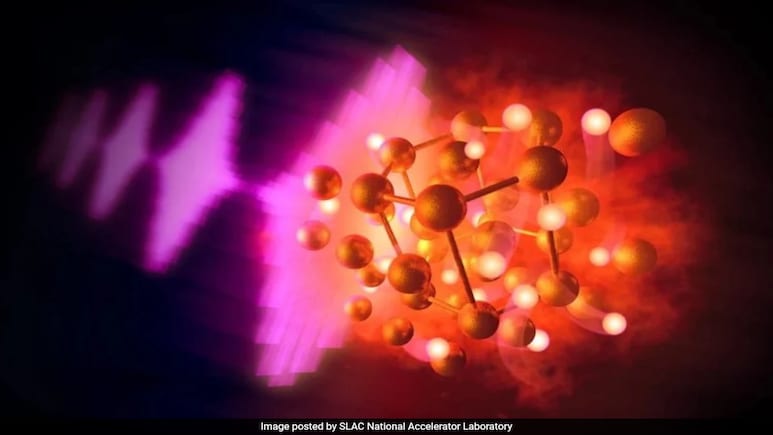
- Researchers created solid binary gold hydride, a compound of gold and hydrogen atoms
- The study was conducted using a diamond anvil cell and X-ray pulses at extreme pressures
- Hydrogen entered a superionic state, flowing freely through the gold lattice and boosting conductivity
For the first time, researchers at SLAC National Accelerator Laboratory in California led an international team that successfully created solid binary gold hydride, a compound composed solely of gold and hydrogen atoms. This breakthrough occurred while the team was studying diamond formation from hydrocarbons under extreme pressure and heat. The study's findings, published in Angewandte Chemie International Edition, offer insight into how chemistry's fundamental rules shift under extreme conditions, such as those found in certain planets or hydrogen-fusing stars.
"It was unexpected because gold is typically chemically very boring and unreactive—that's why we use it as an X-ray absorber in these experiments. These results suggest there's potentially a lot of new chemistry to be discovered at extreme conditions where the effects of temperature and pressure start competing with conventional chemistry, and you can form these exotic compounds," said Mungo Frost, staff scientist at SLAC who led the study.
How was the study conducted?
As per Phys.org, the researchers used a diamond anvil cell to squeeze hydrocarbon samples to pressures exceeding those in Earth's mantle, then heated them to over 3,500°F with X-ray pulses from the European XFEL. By analysing how the X-rays scattered off the samples, the team tracked the structural transformations.
The X-ray scattering patterns confirmed the formation of diamond structures from carbon atoms. However, unexpected signals revealed hydrogen atoms reacting with the gold foil to form gold hydride. Under extreme conditions, the hydrogen exhibited a "superionic" state, flowing freely through gold's lattice and increasing the gold hydride's conductivity.
Hydrogen's light nature makes it hard to study with X-rays, but in this case, the superionic hydrogen's interaction with gold atoms allowed researchers to observe its effects on the gold lattice's X-ray scattering. This enabled the team to indirectly track hydrogen's behaviour, with one researcher noting they could use the gold lattice as a "witness" for hydrogen's actions.
The gold hydride provides a unique opportunity to study dense atomic hydrogen in a laboratory setting, which could shed light on the interiors of certain planets and nuclear fusion processes in stars like the sun. This research could also lead to breakthroughs in harnessing fusion energy on Earth.
Track Latest News Live on NDTV.com and get news updates from India and around the world

